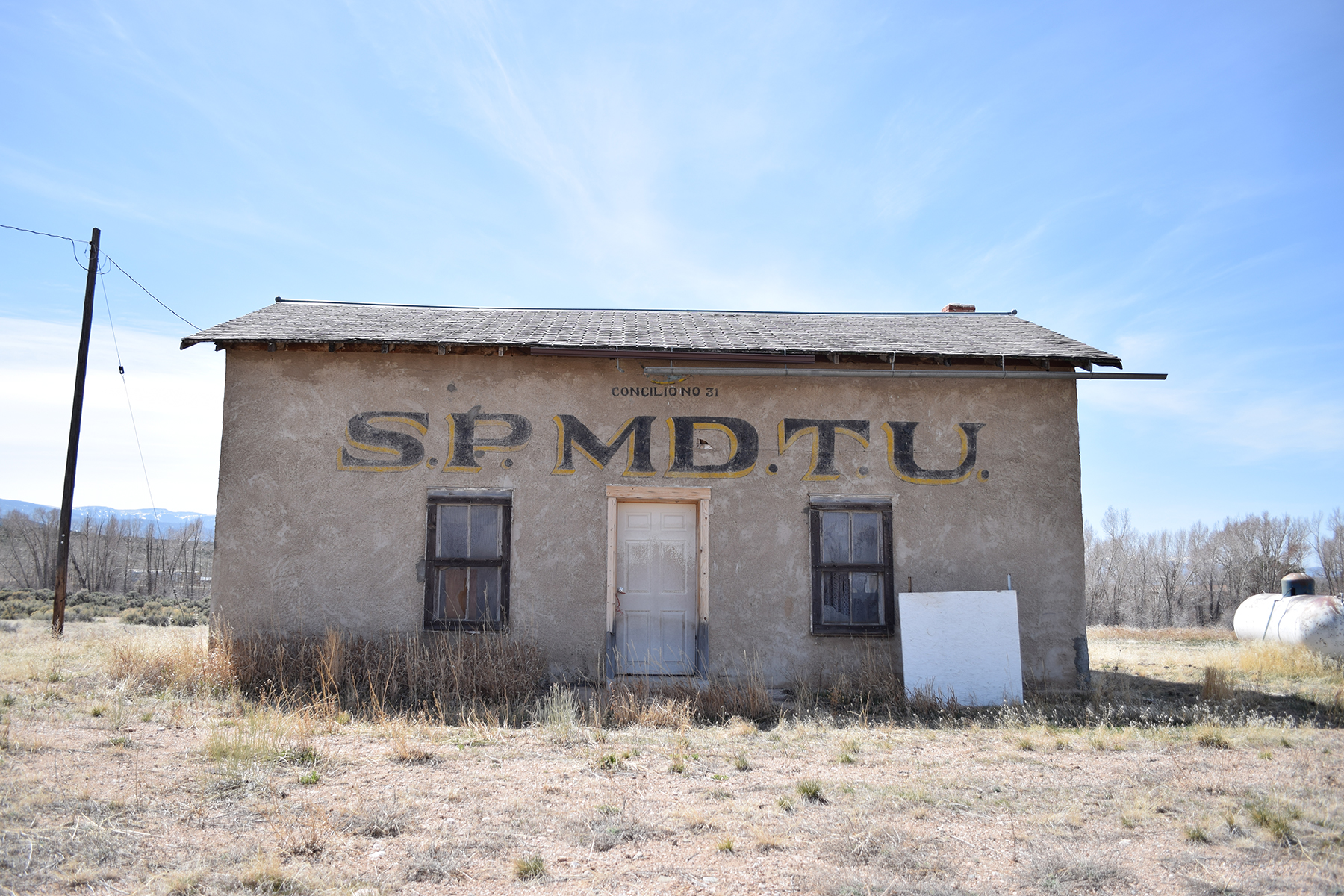National and State Register
Chama SPMDTU Lodge Hall
Costilla County
The Sociedad Protección Mutua de Trabajadores Unidos (SPMDTU) Lodge Hall was built around 1920 near Culebra Creek in Chama. The area is part of an extensión, a long, narrow strip of land reflecting the area’s early settlement by Hispanos in the 1850s. Constructed of stuccoed adobe block walls atop a concrete foundation, this lodge hall, or sala, served as a local chapter house for the Hispano labor union. With no additions or significant alterations, the building testifies to the workmanship of the Hispano lodge members who fabricated the adobe blocks and erected the building.
The SPMDTU organization began in 1900 in Antonito, Colorado. Its first president was Celedonio Mondragón, who worked as a rancher and postmaster of nearby Cenicero before moving to Antonito to pursue jewelry making.
The SPMDTU sought to combat discrimination and inequities and improve the social, economic, and political condition of Hispanos in the Southwest. Members could acquire insurance and received social supports. To become a member in 1909, one had to be an able-bodied, law-abiding Hispano man between the ages of eighteen and fifty-five who believed in a supreme being but was not a head of a political party nor a religious minister. The SPMDTU grew to about 2,000 members across Colorado, New Mexico, and Utah by the 1940s and ’50s. By about 1998 women could become full members. The organization remains active in Colorado and northern New Mexico. Some consider it the oldest continuous Hispano civil rights group in the US.
A safety net in times of misfortune, sociedades mutalistas (mutual aid societies) such as the SPMDTU were especially important for rural communities. The SPMDTU played a key social role too, particularly through dances that were open to all residents of the vicinity and functioned as the organization’s principal fundraisers, especially in the 1940s to ’80s. Salas often hosted wedding dances and receptions. Chama member Richard D. de Olivas y Córdova observed, “When they [residents of the San Luis Valley] think of the SPMDTU they think of dances.”
Founding members of SPMDTU Concilio No. 31 in Chama included farm laborers and sheepherders, whereas the nearby San Luis chapter tended to draw more merchants, businessmen, and townspeople as members. By 1937, the Chama chapter boasted forty-one hermanos (brothers), eventually growing its membership to about fifty. The SPMDTU organization reached a peak of about sixty-five councils by the 1940s.
Although there were several Hispano mutual aid societies in the American Southwest in the late nineteenth and early twentieth centuries, few Hispano fraternal halls in Colorado are as well-preserved as Chama’s. A 1990s photographic survey of SPMDTU lodge halls in Colorado and New Mexico found that many buildings had fallen into disrepair or had been closed, converted to private residences, or demolished.
Centered above the door, the upper part of the façade features a striking painted wall sign in large black letters with heavy serifs and yellow drop shadows reading: “S.P.M.D.T.U.” Above, smaller lettering in the same style reads: “Concilio No. 31,” surmounted by a remnant of the SPMDTU logo of two hands clasped in the group’s handshake—a symbol of the fellowship that generations of members found here.

